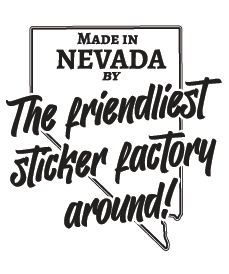In addition to the basics like numbering and variable data symbology, there are several things you’ll need to take into consideration before you order your custom bar-code labels:
- Dimensions and number of encoded characters. All bar-code labels must meet certain standards set by the international General Specifications system, better known as GS1. For example, the popular UPC code used in the U.S. and Canada can consist of no more than 12 encoded digits, while EAN-13 codes used elsewhere in the world can encode only for 13 digits. The nominal size for UPC/EAN bar-code labels is 25.9 mm X 37.29 mm, though you can legally scale the bar-code from 80%-200% of that size. Be sure to consult with your bar-code provider for the optimal size and encoding requirements for your bar-code labels.
- Size of the bar-code label in relation to packaging. As mentioned in the above section, to a certain extent you can scale the size of your bar-codes up or down, which may be a consideration when accommodating package sizes. If you can’t fit a standard UPC/EAN bar-code label on a small package, consider opting for the EAN-8 format, which is deliberately designed for gum and cigarette packages, lip balm tubes, and the like. Avoid truncating a bar-code length unless there’s no other option, and DO NOT truncate a bar-code’s height until you discuss the possible penalties for non-compliance with your trading partners. This is mandatory. For more details on size compliance vs. non-compliance for bar-code labels, review GS1 General Specifications, section 6.3.3.4. You should be able to get a copy of the specs from your bar-code provider.
- Position of bar-code labels on packaging. You’ll need to carefully consider where you put the bar-code labels on your packaging. You’ll have to select an obvious place that’s easy to find but away from any other design elements, and take into account the type of packaging (paper, plastic, bag, box, bottle, etc.), and its shape (flat, curved, or irregular). Your bar-code labels should always be positioned in the same way within a particular class of package. Beyond the common-sense logistics, there are certain compliance rules to follow, again outlined by the GS1 General Specifications.
- The rights of retailers to fine suppliers for inadequate bar-coding. Some retailers, especially the large nationals and multinationals, are likely to get cranky if your bar-code labels don’t comply with GS1 standards. In fact, some reserve the right to fine you if you deliver goods with non-compliant bar-codes—so be very careful here.
Never fear: as long as we know the details of the order, including the type of product the bar-code stickers will be applied to, you can count on us to alert you if things seem off-kilter. Please note, however, that we specialize in printing labels; we don’t do testing, and we don’t provide bar-code verification or certification. For more information on how to obtain such services, check our Third Party Bar-Code Services page.




